The Battle of Midway 75th Anniversary: Turning Point in the Pacific [Part Three]
June 5, 2017 by oriskany
Good afternoon, Beasts of War. Welcome back to our continuing article series marking the 75th Anniversary of the Battle of Midway. Using the “Naval War” rules system presented at www.naval-war.com (Hendrik Jan Seijmonsbergen - BoW: @ecclesiates), we’re taking a wargamer’s view of this pivotal naval battle.
If you’re just joining us, in Part One we summarised the importance of Midway and its place in the Pacific Theatre of World War II, as well as Japanese planning for what they hoped would be a war-winning strike. In Part Two, we tracked the opening moves of the Japanese and American fleets, and recreated some of the opening blows.
Now we can kick off the next stage of the battle. Although heavily outnumbered, the Americans have found the approaching Japanese task force before being discovered themselves, and launched the first airstrikes on the enemy carriers. So far these strikes have been gruesome failures, but history is about to take a heart-stopping turn…
Day Of The Dauntless
At the end of our last article, the Americans were in very bad shape. Although they’d been amply warned of the Japanese attack against Midway by radio intercepts and broken naval codes, found the Japanese carriers before being discovered themselves, and launched the first strike...so far the battle was proving an American disaster.
US Army and Marine Corps bombers launched from the Midway Islands had hit nothing. Navy torpedo bombers had been launched at such extreme range that none of the planes would make it back. Such courage had yielded nothing, not a single torpedo hit a Japanese carrier and every single American torpedo plane had been shot down.
For the Americans, a successful first strike was absolutely critical because they were so badly outnumbered by the Japanese fleets converging on Midway. Only by scoring first, and scoring big, could the Americans hope to even the odds. Now, as if all these failures weren’t bad enough, Japanese scout planes had just found the American carriers.
The situation was about to take a heart-stopping turn, however.
The American airstrike launched from the carriers USS Yorktown, Enterprise, and Hornet on the morning of June 4, 1942 was a very badly organized affair. In an effort to land that vital first strike, squadrons had raced toward the Japanese fleet as soon as they were launched, instead of consolidating into a united task air group.
This meant that different squadrons would arrive at the Japanese fleet at different times, at different altitudes, and from different directions. At first this led to heartbreak, as the luckless “Devastator” torpedo bombers were positively massacred by Japanese AA fire and Zero fighters, all without scoring a single hit.
But torpedo bombers have to attack from low altitude in order to drop their “fish” toward enemy ships. So while the Japanese gunners and fighters were focused on them, no one noticed three squadrons of American SBD “Dauntless” dive-bombers (launched from USS Enterprise and Yorktown) arrive high overhead.
This fortuitous turn of events had nothing to do with American planning. In fact, the Dauntlesses had been lost just a short time previously. Only the decision of Enterprise’s CAG (Commander Air Group) Lt. Commander C. Wade McClusky, Jr., to push his luck with fuel and continue the search, resulted in this decisive moment.
McClusky’s dive-bombers (two squadrons from USS Enterprise) just happened to find the Japanese destroyer Arashi, which had trailed behind the Japanese fleet after trying to sink an American submarine threatening the carriers. From here, the Americans followed the Arashi to the Japanese fleet.
Arriving over the Japanese carriers, the Dauntlesses gradually realized no one had seen them. And with the Zeroes all down at wave-top level slaughtering the Devastators, there was no one to stop them. Immediately they rolled into steep attack dives plummeting straight down on the murderously-exposed Japanese carriers.
The time was 10:20 AM, June 4, 1942. The course of naval history was about to change forever.
No one on the Japanese carriers saw the new threat until it was far, far too late. Having just destroyed the American torpedo bomber attack, they were just about to finally launch their own combined, all-out air strike against the American carriers. But now the Dauntless ships were releasing 500 and 1000pound bombs, nearly perfectly-aimed.
The American Miracle
The Japanese carrier Kaga (“Increased Joy”) was the first to be hit. A 500-poind bomb landed in the aft section of her flight deck, smack in the middle of dozens of fully-fuelled, fully-armed strike aircraft waiting to launch. A second 500-pounder hit further forward, instantly killing almost everyone on her bridge.
McClusky himself then scored with a 1,000-pounder. The bomb penetrated Kaga’s flight deck and exploded in the hangar deck below, amidst tons of ordinance the Japanese hangar crews had left stacked beside the planes as their commanders had vacillated between loading for a strike against American ground targets or warships.
In minutes, the 38,000 ton, 800-foot carrier was a single mass of metal-melting fire. Hundreds were trapped in the engine and boiler rooms, never to escape. Survivors would be taken off by two Japanese destroyers, but by early afternoon the Kaga was put out of her misery by a Japanese torpedo. 811 of her crew had died with her.
At almost the exact same moment, Vice-Admiral Nagumo’s flagship, the carrier Akagi (“Red Castle”) was just launching her first Zero fighter for the strike on the American carriers. Three American Dauntlesses attacked her just then (led by Lt. Commander Richard Best, USS Enterprise), with results grimly similar to those seen aboard the Kaga.
Now here there is some real confusion. Most sources claim the Akagi was hit only once, near the back of the flight deck, squarely amidst all the crowded planes waiting to take off. Most of the best pilots in the Japanese Navy, their “Top Gun class”, died right then and there (as flagship, the Akagi was the most prestigious carrier in the fleet).
Yet Akagi’s captain (Taijiro Aoki - the last man to leave her) distinctly remembered her being hit again, the second bomb landing right near the bridge. This is probably not something he would have forgotten, but it’s possible this second blast was an internal explosion coming from inside the hangar deck, triggered by the first bomb.
Whatever the case, the Akagi was a lost cause. It bears noting that carriers aren’t usually “killed” by one or two bomb hits. But between the Japanese aircraft waiting to take off, the piles of ordinance left stacked in the chaotic hangar decks, the pressurized fuel lines, poor training and equipment for damage control … the Akagi was doomed.
Vice-Admiral Nagumo had to transfer his flag to a cruiser. Like the Kaga, Agaki would have to be torpedoed later that night after the crew survivors were taken off. As she went down, survivors aboard the rescuing destroyers cheered “Banzai! Akagi banzai!” – trying to give their prestigious flagship a worthy send off.
Last to be struck was the Sōryu (“Green Dragon”). Whereas Kaga and Akagi had been hit by Dauntless dive-bombers from USS Enterprise, Sōryu was attacked by Dauntlesses of Squadron VB-2, based on USS Yorktown. The luckless Sōryu was probably hit the worst of all three … sustaining three 1,000 pound bomb hits.
The story was much the same. Fuelled and armed aircraft, unsecured ordinance, insufficient damage control training … the Sōryu never stood a chance. She lost all power within 15 minutes, and what remained of the crew was ordered to abandon the charred, corpse-strewn wreck five minutes after that
In all, 711 men died aboard, including her captain, who chose to remain aboard as she was torpedoed by Japanese destroyers and sank. This was almost 70% of her crew, giving the Sōryu the highest fatality percentage of any ship sunk at Midway.
The War Is Changed
This entire attack happened in about five minutes. In those five minutes, the most powerful navy afloat (and the whole Japanese Empire) took a catastrophic blow from which it would never recover. Never again with they launch a Pacific invasion, all subsequent sorties would be in response to American invasions of Japanese-held islands.
As for the Battle of Midway, the Japanese had gone from a four to three advantage in carriers to a one to three disadvantage. The Battle of Midway, and the Pacific War, had realistically been lost then and there.
All that said, the Japanese weren’t giving up. They knew where the American carriers were, and the Japanese had one fully-loaded carrier left: Hiryū, or “Flying Dragon.” They also had the immense firepower of the old-school Japanese battleships, which could easily blow the American carriers into scrap … if they could just get close enough.
Once again I’d like to thank Hendrik Jan Seijmonsbergen for the immense amount of painting, gameplay, and photographs he’s been putting into this project. If your interest in naval wargaming has been piqued at all, please take a moment to check out his excellent World War II naval wargame system at www.naval-war.com.
We hope you’ve enjoyed this latest chapter of our wargaming review of the Battle of Midway. All of this happened 75 years ago almost exactly to the day, easily one of the most decisive moments in naval history since the Battle of Trafalgar. If there was ever a time to present such an article series (or post a comment on one), it’s now.
So please take a moment to post your comments or questions below. And join us next week as the Japanese, abruptly the underdogs in this fight, remind us that when an enemy is wounded and cornered … is precisely when he is the most dangerous. Indeed, history isn’t quite done with the waters of Midway just yet.
If you would like to write an article for Beasts of War then please contact us at [email protected] for more information!
"The American airstrike launched from the carriers USS Yorktown, Enterprise, and Hornet on the morning of June 4, 1942 was a very badly organized affair..."
Supported by (Turn Off)
Supported by (Turn Off)
"All of this happened 75 years ago almost exactly to the day, easily one of the most decisive moments in naval history since the Battle of Trafalgar..."
Supported by (Turn Off)

































![How To Paint Moonstone’s Nanny | Goblin King Games [7 Days Early Access]](https://images.beastsofwar.com/2024/12/3CU-Gobin-King-Games-Moonstone-Shades-Nanny-coverimage-225-127.jpg)







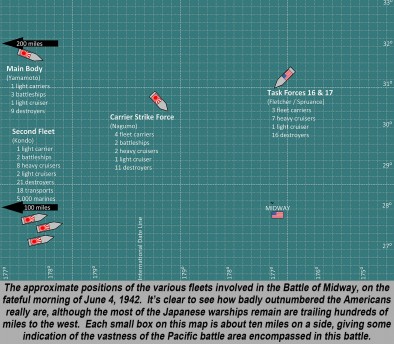

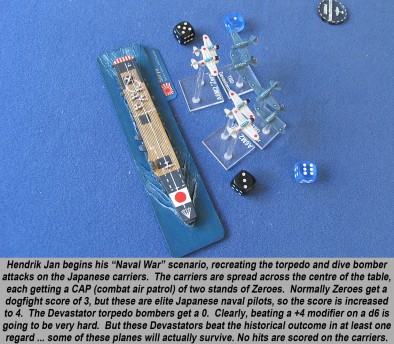
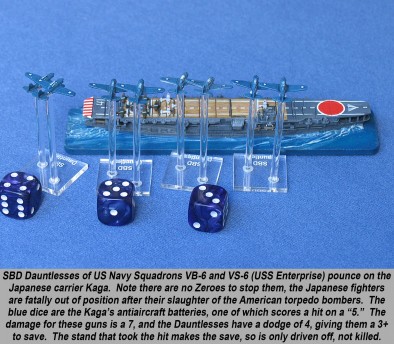
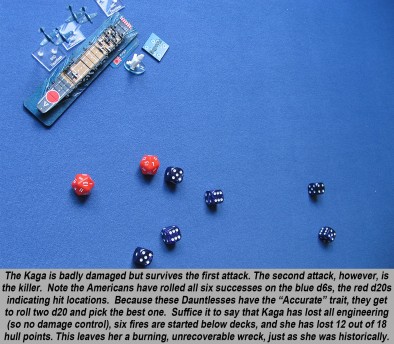
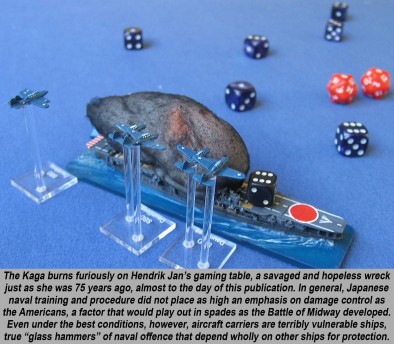
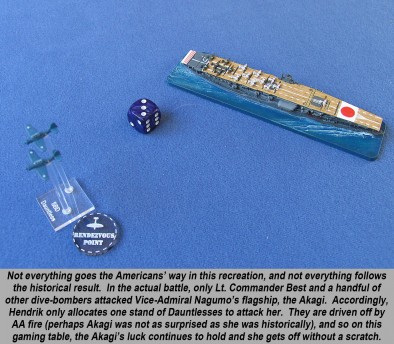
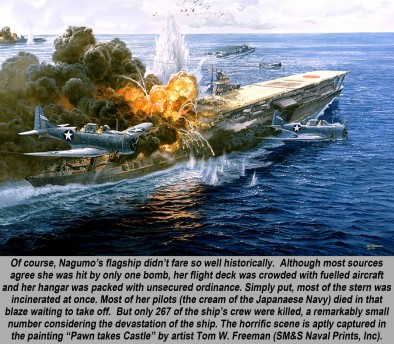
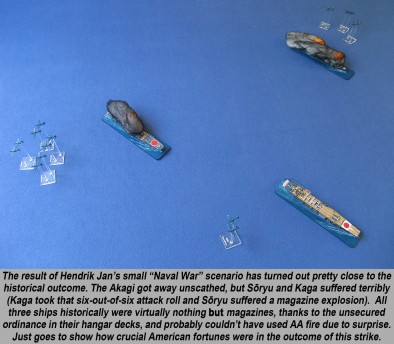
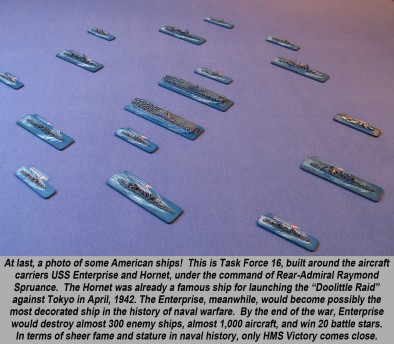
































I just came across this article today. http://www.realcleardefense.com/articles/2017/06/05/why_japan_lost_the_battle_of_midway_111525.html
Also I highly recommend this book to anyone interested: Shattered Sword: The Untold Story of the Battle of Midway. It does a very good job at looking at the Japanese perspective of the battle.
Thanks very much for kicking us off, @72draco ! 😀 Indeed, we were talking about Shattered Sword … albeit briefly … in the Part 02 comment thread. Great book. I realize the perspective in Part 03 is pretty dominated by the US. Please rest assured this is because this is “they’re turn.” Clearly you know a lot about Midway so you know “what’s coming next,” so the decisions and actions taken by men like Yamaguchi and Kaku are coming up. As far as “why Japan lost Midway” – we wrap this up largely in Part 05 … well, at least… Read more »
Fabulous article once again. Always nice to see these historical scenarios set up with some striking eye candy. Well done! 🙂
Thanks very much, @cpauls1 ! 😀
A very good read again. And I have to say you have a lot of writing skills @oriskany . I actually felt some suspense while reading, whether the Americans would make it, although I already knew how it was going to turn out and most of the thinks that were happening. Good job.
And also a very good job from Hendrik Jan. His models are just breathtakingly good. I researched a little how he did it and he turned quite ordinary gaming pieces into very realistic looking ships.
Thanks very much, @bothi . Man, that’s high praise, when a writer can “bring suspense” to events so long ago. I admit to the same thing every time I watch the end of the movie Gettysburg. No matter how absurd it sounds, every time General Armistead reaches that wall at the end Pickett’s Charge and cracks the Federal line, I always catch myself almost hoping … will he actually do it “this time?” 😀 Also, whenever I watch Titanic. Again, absurd, but I always find myself half-hoping they’ll just miss the iceberg “this time.” (??) Just a well-done scene, where… Read more »
Great read. Midway conjure up the taste of fries in my mouth. From playing the very historical incorrect Midway:1942 in a local burger joint in my misspend youth.
You are right it is not often that the history of the world is changed in 5-10 minutes like that. If only it had not cost both side so dear in loss of life.
Great stuff. It’s been years since I watched it, but is the film Midway actually any good?
Thanks very much, @darthcheese – Actually lots of people have been asking me about the 1976 Midway movie lately. While I’d never hold up a Hollywood movie as a “historical document” – I don’t think Midway isn’t too bad. Definitely a helluva lot better than most (like Pearl Harbor, Braveheart, Fury, and The Patriot – some of the worst historically). Midway gets the basic events right, shows even-handedness and objectivity for both sides. The movie also shows how competent and professional the Imperial Japanese Navy was, although it goes a little lightly on the bad American command decisions at the… Read more »
Fantastic Jim. Really loving this. Like some of the other guys I saw the movie years ago and have all but forgotten it. And I seem to remember playing a turn based wargame on the Commodore 64 based on Midway (now that really is ancient History!). Even with that I never really appreciated the full importance or depth of the Battle and the influence it had on the rest of the war. Thanks for helping me remember and after all this time to draw a different perspective on the whole thing.
Oh man, @waywarddarkwolf – Is this the Midway Commodore 65 game you’re talking about?
https://www.youtube.com/watch?v=mXpNXYDrRKU
Why am I reminded of the old Trevor Sorensen “Star Fleet” series of games? 😀
Indeed, Midway really eliminated the advantage held by the Japanese Navy over the American Navy. With that loss of advantage, coupled with American ship building and industrial output, the Americans were soon able to reverse the overall tide of offensive action against the Japanese, starting at Guadalcanal on August 7 1942, and begin a general push back into Japanese territory that would lead to the end of the war.
Ooo the C64 I remember many hours glued to one if them killing whatever was out at the time.
It might have been a C128 – but my favorite old computer game was “Star Fleet 1 – the War begins” it’s kind of like the Midway game described above, crossed with Star Trek.
https://www.youtube.com/watch?v=k98rNjtVg-I
God, I don’t remember the sounds being this annoying. 😐
don’t think they were much different never had one got a Amiga when I had the chance.
Awesome. 😀
A very enjoyable read – thanks! I played “Flat Top” by Avalon Hill a number of times and enjoyed the tension of not knowing where everything was (we played with a GM who had the master map); your article has brought back some great gaming memories – thanks again.
Awww, damn @itchardpirate ! Flat Top! Now there is some some hard core wargaming. A tough game to manage, let alone master. Played some of this back in 1991-92 when I had a gaming crew going in the barracks. Haven’t found a gaming crew since then that could handle it, and somewhere along the way I lost my copy. Definitely a great game, but not for beginners or casual wargamers. 😀
I also like the feeling of drama and suspense that you convey with lines like, “So far these strikes have been gruesome failures, but history is about to take a heart-stopping turn…” I also enjoyed your summary in which you stress how quickly this battle turned.
Sometimes the article just writes itself. 😀 Thanks, @gladesrunner !
Another well done from me @oriskany. I am still impressed by how you squeeze so much history into so few words and still make an entertaining read. A term is often used yet often forgotten it too came of age in this conflict, but simply taken for granted. Combined Arms. In the opening of WW2 we have the tank arm and the mechanized infantry fighting two separate battles within the same battle space. But in the operational their results appear to be combined. Just prior to the battle of the Bulge we see coordinated actions down to company level fighting… Read more »
Thanks, @jamesevans140 ! I think I would agree that a “combined arms” or “expeditionary” elements is definitely ramping up after Midway (relatively early in the Pacific War) and really starts catchings its stride by the late Solomons campaign. With Marine (and Australian 😀 ) troops on the ground, US Army bombers and fighters, USMC fighters on land-based airfields (Baa Baa Black Sheep, baby!) and of course US Navy task forces and support fleets (including “CB” or “SeaBees” – Construction Battalion US Navy engineers building all these airfields and bases, etc) . . . . . . all engaged with the… Read more »
Thanks for the compliments @jamesevans140
I really hope these articles can tickle peoples’ interest and nudge them to the website to give the game a try. One of the objectives of the game (and making it free) is to get some fresh blood into the Naval Wargaming niche.
Yey! 100th post (101 now) 😀
Ow wait, the 100p is not for posts?
No, @ecclesiastes – the 100p is for the number of +1 “thumbs up” people have given you. E.g., I just +1’d both your previous posts, so you should be at 102 when I poist this and the page refreshes. 😀
Awesome! 😀
😀
Make that 104 ! 🙂
And 330 for you, @craigwrdouglas ! 😀
When we start the “support thread” in the forums (this week), I DEFINITELY PLAN for a game of Naval War myself with some battle reports. I didn’t want to use Naval War myself for the article series (hence, I asked @ecclesiastes for help with the photos) as . . . one, who knows the rules system better than the designer? two, no way I had enough ships or the right ships. But I do have about 20 Avalon Hill “War at Sea” miniatures and even some old “SeeKrieg” metal ones that can scrape by in a pinch. Enough for a… Read more »
Great article as ever and really good photos. Liked and agree with your review of the film. I still enjoy watching it.
Thanks @gremlin – As for the movie Midway – absolutely. For historical accuracy worked into an entertaining film, I give it four “SBD dive bombers” out of five. 😀
a great article the shock of losing 3 carriers in the same day would be way worse than when the hood fell to Bismarck PS love the carrier English names.
PPS love the models and pictures.
Carriers’ English names . . . the Japanese translations? Akagi – Red Castle. The carrier is actually named for an extinct volcano somewhere in Japan that is in turn named “Red Castle.” Soryu – Green Dragon Hiryu – Flying Dragon Kaga – literally “Increased Joy”, but actually named for an old imperial province in feudal Japan. Doesn’t exist officially anymore, it would be like if the UK Royal Navy named a ship “Mercia” or some such. I don’t speak Japanese, of course, these are just translations I’ve read. American carriers: Yorktown – named for the 1781 battle (more of a… Read more »
Wonderful series! I always look forward to your articles.
Thanks very much, @ghostbear ! Granted, they would be better with some Clan Ghost Bear battlemechs . . . but I didn’t want to overdo it. 😀 😀 😀
Hah! “Sir! there is a Kodiak on the deck!”
Just whatever you do, don’t let anyone fire their jump jets, they’ll burn a hole in the carrier’s flight deck! 😀
As far as Enterprise goes I am caught between two of them and nothing to do with Star Trek. The frigate Enterprise, a sister ship to the sailing ship Constitution, had a great career and the big E or lucky E. Sometimes ships are named in honor of a now historic class of ship. If the RN named a ship HMS Flower it would be in honor of the Flower class convoy escorts. Not that I am saying that this is the case here for Hornet and Wasp. In this case one was a sloop and the other was a… Read more »
Well hot damn. I friggin’ learned something today. No shit, I checked Wikipedia (hey, you gotta start somewhere) and found: The Continental Ship Wasp was originally a merchant schooner named Scorpion, built at Baltimore, and purchased by the Continental Navy late in 1775, the first US naval ship to be given that name. She was outfitted at Baltimore during the winter of 1775–1776; and commissioned in December 1775 or January 1776, Capt. William Hallock in command. [The carrier USS Wasp CV-7 would be the 8th US Navy ship to carry that name] Wasp set sail from Baltimore on 14 January… Read more »
This makes me want to do some naval gaming great job as usual.
Thanks very much, @lee337 ! 😀 I’ve been doing a little myself lately and will be doing some “Naval War” this weekend! 😀
No problems @oriskany for pointing to discovery something. Interesting how the original Wasp and Hornet formed a group that joined another group, as did their descendants. The new guy came around today. We talked about part 3 this morning. He had read it just before driving over and was still excited about it when he arrived. He thought your article covered the topic brilliantly in a very engaging way. So more stars to you. He is currently reading about the Pacific War and has just finished the chapter on the Battle of Corel Sea and is now very much looking… Read more »
Awesome, @jamesevans140 – thanks! Now we just need all these “new guys” to sign up as Beasts of War backstagers! 😀
Anything that draws a little extra attention to historical wargaming in general, and Pacific WW2 in particular (among other often overlooked topics) is a good thing. Glad he liked the article and @ecclesiastes amazing photos. 😀
It is not for a want of trying @oriskany. I don’t know why but the members of my group appear to be gun shy. They read your stuff hear and they discuss it but then ask me the questions. I keep answering them to join BoW even just taking the first step of getting a free account so they can join in with the discussion and ask you the questions. I told them you would be extremely happy to answer their questions. I am hoping that the work that will go into posting our version of Operation Sea Lion will… Read more »
What can you do @jamesevans140 ? You know what they say … you can lead a horse to water …
Quite interested to see where you got the models from. Would there be anywhere you’d recommend at all?
@firstwavedzc Well, since no single manufacturer has ALL ships in 1/1800 I tend to shop around a little. I started out with my Axis & Allies War at Sea collection, not the greatest sculpts, but many are passable with a bit of repainting. Then there is/was the once started but never continued Mongoose publishing miniatures which you can find on their site, but that collection is ever shrinking still in anticipation of Victory at Sea 2 which has probably died a peaceful death by now. Then there is Shapeways, most of my current collection hauls from there. Excellent sculpts, but… Read more »
@firstwavedzc I replied to you but the reply seems to be in moderation?
Ah, I think I might know what happened. On the “frpnt page” you’re only allowed something like 2-3 links (unlike the forum threads) – an anti-spamming measure, I think the site’s just programmed to make sure you’re not a bot.
Got the reply thanks!